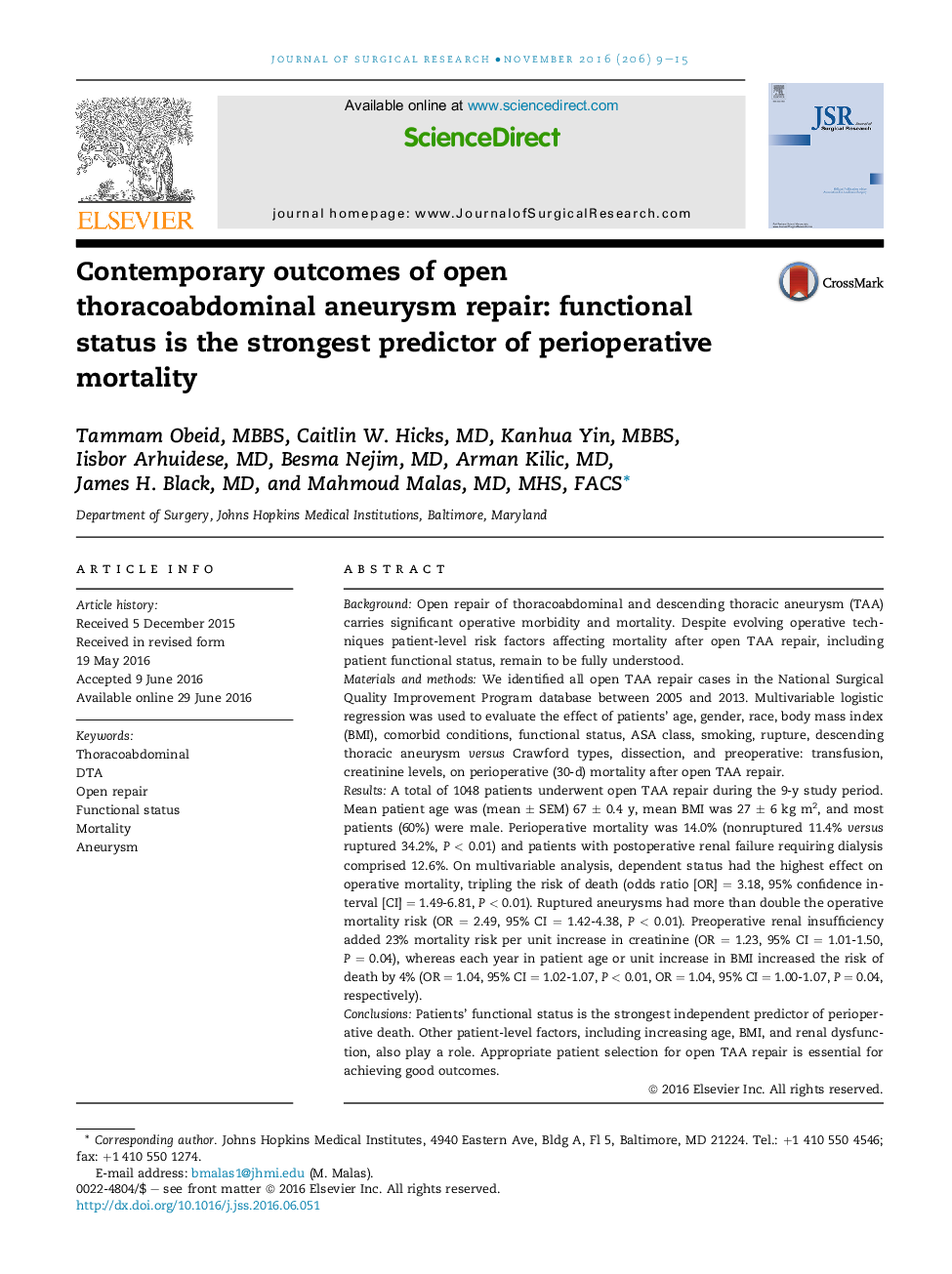| کد مقاله | کد نشریه | سال انتشار | مقاله انگلیسی | نسخه تمام متن |
|---|---|---|---|---|
| 4299067 | 1288381 | 2016 | 7 صفحه PDF | دانلود رایگان |
BackgroundOpen repair of thoracoabdominal and descending thoracic aneurysm (TAA) carries significant operative morbidity and mortality. Despite evolving operative techniques patient-level risk factors affecting mortality after open TAA repair, including patient functional status, remain to be fully understood.Materials and methodsWe identified all open TAA repair cases in the National Surgical Quality Improvement Program database between 2005 and 2013. Multivariable logistic regression was used to evaluate the effect of patients' age, gender, race, body mass index (BMI), comorbid conditions, functional status, ASA class, smoking, rupture, descending thoracic aneurysm versus Crawford types, dissection, and preoperative: transfusion, creatinine levels, on perioperative (30-d) mortality after open TAA repair.ResultsA total of 1048 patients underwent open TAA repair during the 9-y study period. Mean patient age was (mean ± SEM) 67 ± 0.4 y, mean BMI was 27 ± 6 kg m2, and most patients (60%) were male. Perioperative mortality was 14.0% (nonruptured 11.4% versus ruptured 34.2%, P < 0.01) and patients with postoperative renal failure requiring dialysis comprised 12.6%. On multivariable analysis, dependent status had the highest effect on operative mortality, tripling the risk of death (odds ratio [OR] = 3.18, 95% confidence interval [CI] = 1.49-6.81, P < 0.01). Ruptured aneurysms had more than double the operative mortality risk (OR = 2.49, 95% CI = 1.42-4.38, P < 0.01). Preoperative renal insufficiency added 23% mortality risk per unit increase in creatinine (OR = 1.23, 95% CI = 1.01-1.50, P = 0.04), whereas each year in patient age or unit increase in BMI increased the risk of death by 4% (OR = 1.04, 95% CI = 1.02-1.07, P < 0.01, OR = 1.04, 95% CI = 1.00-1.07, P = 0.04, respectively).ConclusionsPatients' functional status is the strongest independent predictor of perioperative death. Other patient-level factors, including increasing age, BMI, and renal dysfunction, also play a role. Appropriate patient selection for open TAA repair is essential for achieving good outcomes.
Journal: Journal of Surgical Research - Volume 206, Issue 1, November 2016, Pages 9–15
